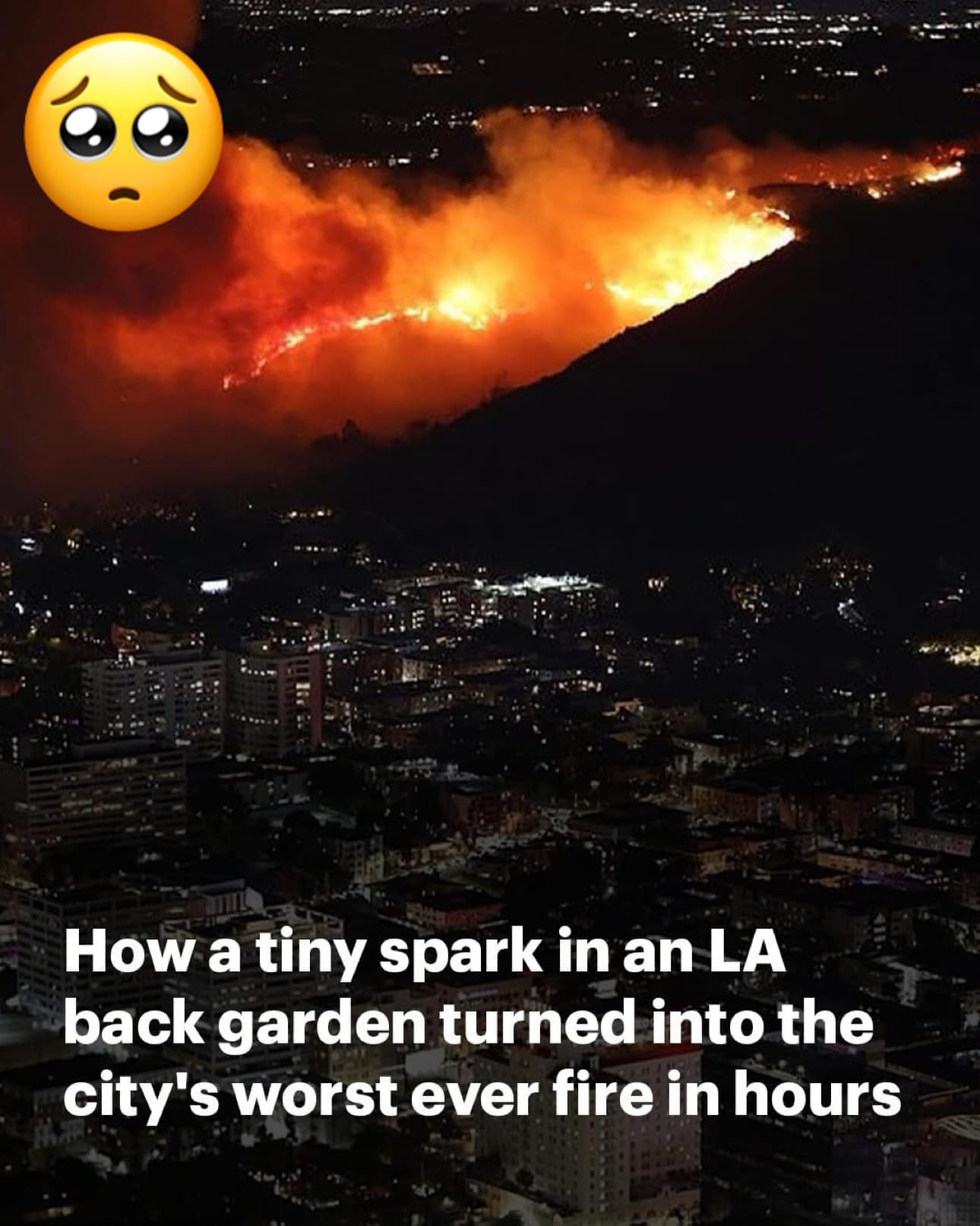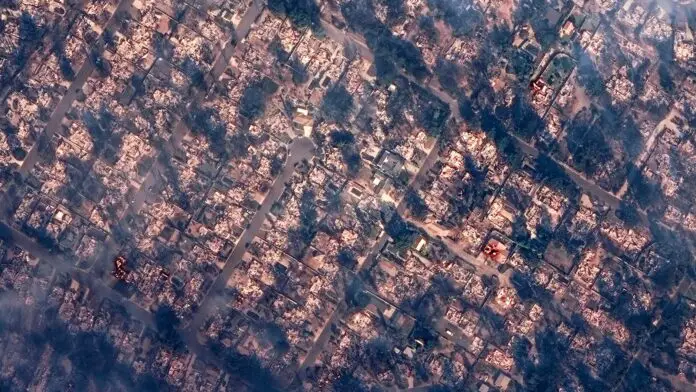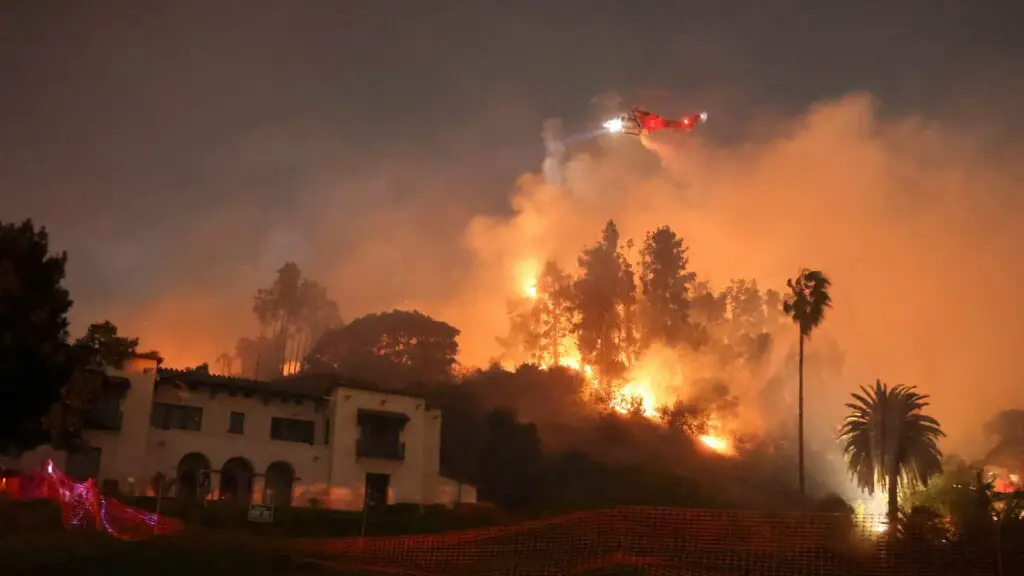
On Tuesday morning, live webcams captured the alarming transformation of a backyard spark, initially just a plume of grey smoke, into a fierce and uncontrollable wildfire.
In mere minutes, the smoke thickened into a dense cloud as flames consumed the dry plants and bushes.
“The wildfire is spreading at an unprecedented speed… it’s now unlike anything we have seen in our lifetime,” LA Fire Chief Kristin Crowley stated.
Sadly, the chances of controlling the wildfire in the coming days seem slim due to the adverse weather conditions.
Approximately 179,783 residents in Los Angeles County are under evacuation orders, with an additional 200,000 under evacuation warnings, meaning they could be told to leave at any moment, as reported by the BBC.
At least five people have died, and dozens more are injured.

The Palisades wildfire, the largest blaze in southern LA, has destroyed thousands of homes, businesses, and other structures.
Currently, five active fires are raging across the City of Angels.
Last summer, podcaster and comedian Joe Rogan shared a conversation with an LA firefighter. Speaking to fellow comedian Sam Morril, Rogan recalled the firefighter’s ominous prediction: “One day, it’s just gonna be the right wind and fire’s gonna start in the right place, and it’s gonna burn through LA all the way to the ocean, and there’s not a f***ing thing we can do about it.
“If the wind hits the wrong way, it’s just going to burn through LA.”
Tragically, these predictions have come to pass.

Experts suggest that, beyond the weather, climate change significantly contributes to the wildfire’s spread in January. The National Oceanic and Atmospheric Administration highlighted, “Climate change, including increased heat, extended drought, and a thirsty atmosphere, has been a key driver in increasing the risk and extent of wildfires in the western United States.”
According to the Daily Mail, experts pointed out that heavy rains from last year’s El Niño spurred vegetation growth in Los Angeles, which subsequently dried out and became highly flammable.
As the wildfire erupted, Southern California endured the destructive force of the ‘devil winds,’ officially known as Santa Ana winds—dry, warm gusts blowing inland from the northeast, in stark contrast to the cooler winds usually originating from the Pacific Ocean.